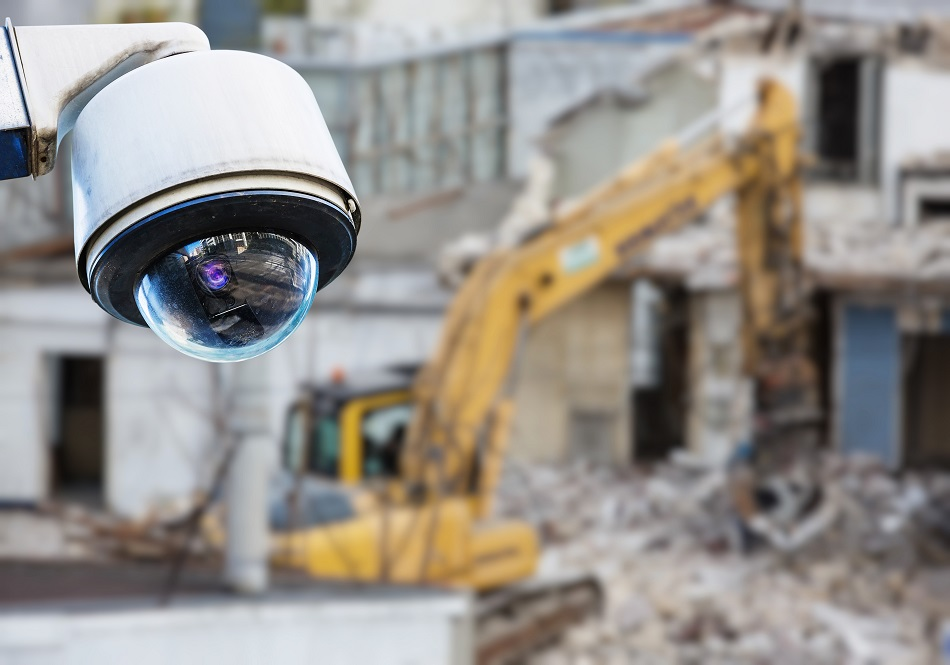
Image Credit: pixinoo/Shutterstock.com
The construction industry is improving its safety in numerous ways by installing on-site cameras. Traditional CCTV combined with cutting edge cameras with AI capabilities is bringing a level of safety that the construction industry has been falling short of, as it remains one of the most dangerous industries to work in. Government statistics state that one in five worker deaths in 2017 was in the construction industry. Cameras are being used as a strategy to tackle workplace dangers, and are alerting workers in real-time to dangerous or hazardous situations, by monitoring the environment to prevent accidents, and by utilizing artificial intelligence (AI) to identify and alert staff to unauthorized personnel entering the site.
CCTV
Previously, the main role of CCTV was to prevent theft of expensive equipment and materials from the construction site, by both workers and trespassers. However, construction companies are now utilizing existing CCTV infrastructure to help management identify potential health and safety risks, such as poor lighting, obstructions to fire escapes, clutter, the misuse of equipment and machinery, and more.
GoPro Cameras
While GoPro cameras are strongly associated with travel and adventure, they are also being utilized by the construction industry to enhance safety. Recent tests have shown that equipping workers with these point of view cameras effectively enhanced management’s view of the overall safety of the construction site, helping them to spot potential risks and solving them before accidents and injuries occurred.
AI
In 2017, Microsoft launched a new workplace safety software that uses AI to identify potential threats to worker safety, the innovation was specifically aimed at the construction industry. The software uses existing networks of CCTV at construction sites along with AI to create a tool that alerts management to unauthorized personnel entering the site, misplaced tools, hazardous situations and more. The system can also be used to warn workers of fire or create alerts when they have failed to dress in protective clothing.
Wireless Cameras
Environmental concerns are driving a new trend in camera-based technology to boost construction site safety. New, wireless, solar-powered cameras have become a rising trend, with them being installed to monitor around the clock. The result is that periodic safety checks are being made easier, and companies are being able to have a clearer view of what is going on day-to-day, enabling them to improve their safety standards.
Fundamental Barriers to Widespread Adoption of New Camera Technologies
While there are several technologies available and others being developed to enhance worker safety at construction sites by using camera equipment, there are still barriers preventing widespread adoption of this beneficial technology. First, the construction industry is known for being a late adopter of new technology, and this is considered to be largely because there is a technology skills gap in the industry. Workers within this industry are less likely to be well versed in technology in comparison to other industries, and this lack of knowledge acts as a barrier to new technology.
Potentially posing a larger obstacle to the adoption of new camera technologies are the costs involved. New technology is often considered to be expensive to set-up despite it not being the case. The camera technologies described above are not expensive to install because they often rely on existing technology, such as existing CCTV networks, or they rely on the cloud, making them inexpensive to run. Educating current staff on new technologies as well as attracting technology-savvy staff into the construction industry is fundamental to implementing these new technologies successfully into the industry.
Sources and Further Reading
Disclaimer: The views expressed here are those of the author expressed in their private capacity and do not necessarily represent the views of AZoM.com Limited T/A AZoNetwork the owner and operator of this website. This disclaimer forms part of the Terms and conditions of use of this website.